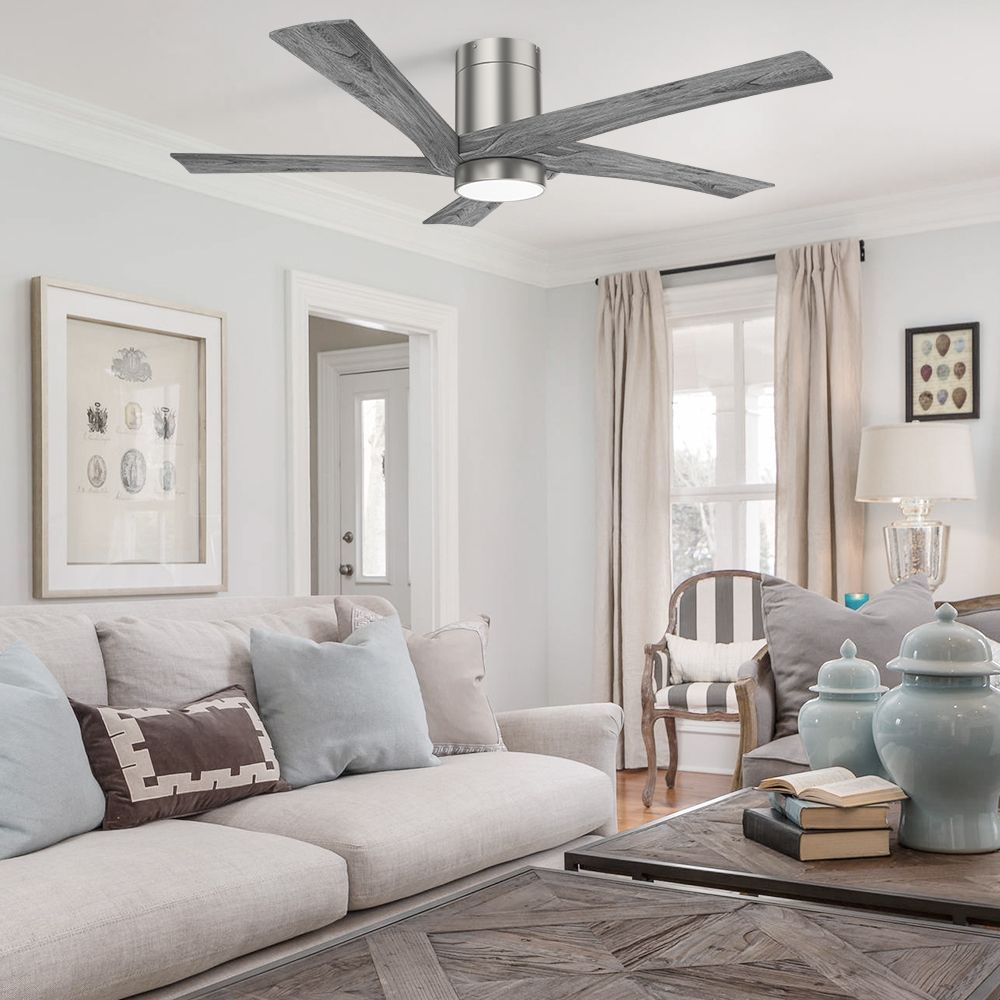
Get A Quote
Why The Ceiling Fan Makes Noise?
Ceiling fans, those trusty companions during sweltering summers, hold the key to soothing air circulation within our homes. Yet, these steadfast allies occasionally unveil a disconcerting side—a symphony of noise that can leave us perplexed. Let's delve into the world of the enigmatic noises emitted by ceiling fans, understanding their origins, and unraveling solutions to restore the serenity they're meant to provide.
Why Does the Ceiling Fan Make Noise?
The quiet revolution of a ceiling fan can be disrupted by an array of factors residing within its intricately designed components, leading to the puzzling question: Why does the ceiling fan make noise?
Loose screws: Despite their unassuming stature, the screws that hold a ceiling fan together can wield significant influence over its noise levels. Over time, the relentless operation of the fan can induce vibrations, causing these screws to gradually loosen. This seemingly innocuous issue can escalate into a cacophony of rattles and hums, robbing the fan of its soothing presence.
Unbalanced blades: A harmonious dance between fan blades is essential for smooth and silent operation. However, even the tiniest deviation from equilibrium can give rise to unwelcome knocking sounds. Imbalanced blades set off an erratic wobble, triggering interactions with the fan housing that result in persistent, often irksome, noise.
Motor issues: At the heart of every ceiling fan lies its motor—a powerful component that propels the fan into action. Yet, this very motor can be a source of the perplexing noise that disrupts our calm. Worn-out bearings, misalignment, or inadequate lubrication can contribute to a range of sounds, from a subtle hum to intrusive rattles, making the fan's operation less serene than intended.
Dirty or damaged bearings: Hidden within the fan's motor housing, bearings play a crucial role in ensuring smooth motion. These tiny yet vital components can be adversely affected by dust accumulation or wear and tear. This wear and tear can lead to high-pitched whining sounds, disrupting the tranquility that a ceiling fan is meant to provide.
Poor installation: The idyllic picture of a fan gently circulating air can be marred by an improper installation. An inadequately mounted or misaligned ceiling fan can transform the very space it's meant to enhance into a resonating chamber for noise. These installation irregularities set the stage for unwanted noise emissions, undermining the fan's promise of serenity.
How to Stop The Ceiling Fan From Making A Knocking Sound?
For those seeking to ensure the optimal performance of ceiling fans, understanding the root causes of noise disruptions is pivotal. By addressing these issues, we can enhance the quality of the fan's operation and provide customers with a seamless experience.
Step 1: Tighten Loose Parts
Initiate the quest by ensuring that the fan's structural integrity is intact. Tighten any loose screws, nuts, or bolts that may have succumbed to the fan's vibrations, mitigating potential sources of noise.
Step 2: Check for Unbalanced Blades
Harness the power of a blade balancing kit to restore equilibrium to your fan's operation. Address imbalanced blades and alleviate wobbling, preventing the knocking noises that can detract from the fan's performance.
Step 3: Inspect the Motor
Thoroughly inspect the fan's motor assembly for misalignment, wear, or lack of lubrication. Lubricate bearings to minimize friction-induced noise, contributing to a more serene environment.
Step 4: Clean or Replace Bearings
Combat high-pitched whining noises arising from dirty or damaged bearings. Distributors can offer cleaning solutions or replacement bearings, ensuring the longevity of the fan's quiet operation.
Step 5: Ensure Proper Installation
Encourage meticulous installation practices to uphold the promise of a noise-free environment. Distributors can provide guidelines and resources to ensure proper mounting and alignment, setting the stage for optimal fan performance.
Proper Maintenance to Prevent Future Noise Issues
Empower customers with the knowledge and tools to maintain the fan's tranquility over time. You can educate users on routine maintenance practices, fortifying the fan's performance against future noise disruptions. While you can equip customers with solutions to common noise issues, it's essential to recognize situations where professional intervention is necessary. A collaborative approach ensures that customers enjoy the full benefits of a well-operating ceiling fan.
FAQs About Ceiling Fan Noise
1. Why is a ceiling fan making a humming noise?
A humming noise from a ceiling fan often points to motor-related issues. The most common culprit is worn-out bearings within the motor assembly. Over time, friction and dust accumulation can lead to these bearings emitting a low hum. Regular lubrication and proper maintenance can mitigate this noise.
2. How can unbalanced blades cause noise in a ceiling fan?
Unbalanced blades can trigger irregular wobbling during operation, resulting in knocking or tapping noises. The uneven distribution of weight causes the fan to vibrate against its housing or mounting bracket, generating these disruptive sounds. Balancing kits and careful adjustment of blade positions can help eliminate this issue.
3. What's the difference between a rattling noise and a grinding noise in a ceiling fan?
A rattling noise is often caused by loose screws, blades, or fan components. It can also occur due to poor installation. On the other hand, a grinding noise signifies more severe issues, such as motor misalignment or bearing damage. Addressing loose parts or lubricating bearings can alleviate rattling, while grinding noises may require professional attention.
4. Can a ceiling fan produce a clicking sound?
Yes, a clicking sound can emerge from various sources, including loose screws, warped blades, or even interference with nearby objects. Investigate the fan's components, ensuring everything is properly secured and aligned. Additionally, check for any foreign objects obstructing the fan's rotation.
5. How can proper installation prevent ceiling fan noise?
Proper installation plays a pivotal role in preventing noise issues. When a fan is incorrectly mounted or not properly aligned, it can wobble and rattle during operation. Distributors should emphasize adherence to manufacturer guidelines, including securing the fan to a sturdy ceiling junction box, to ensure smooth and quiet fan performance.
Conclusion
Ceiling fans, with over 60 million units sold in the US in 2020, serve as indispensable fixtures within our living spaces. KBS, a notable ceiling fan manufacturer, stands as a testament to quality and innovation. Through a combination of understanding the origins of fan noise and implementing effective solutions, we can ensure that the promise of a peaceful and soothing environment is maintained. As the hum of a well-functioning ceiling fan graces our homes, KBS continues to shine as a beacon of excellence, transforming spaces into havens of calm amidst the bustle of modern life.


